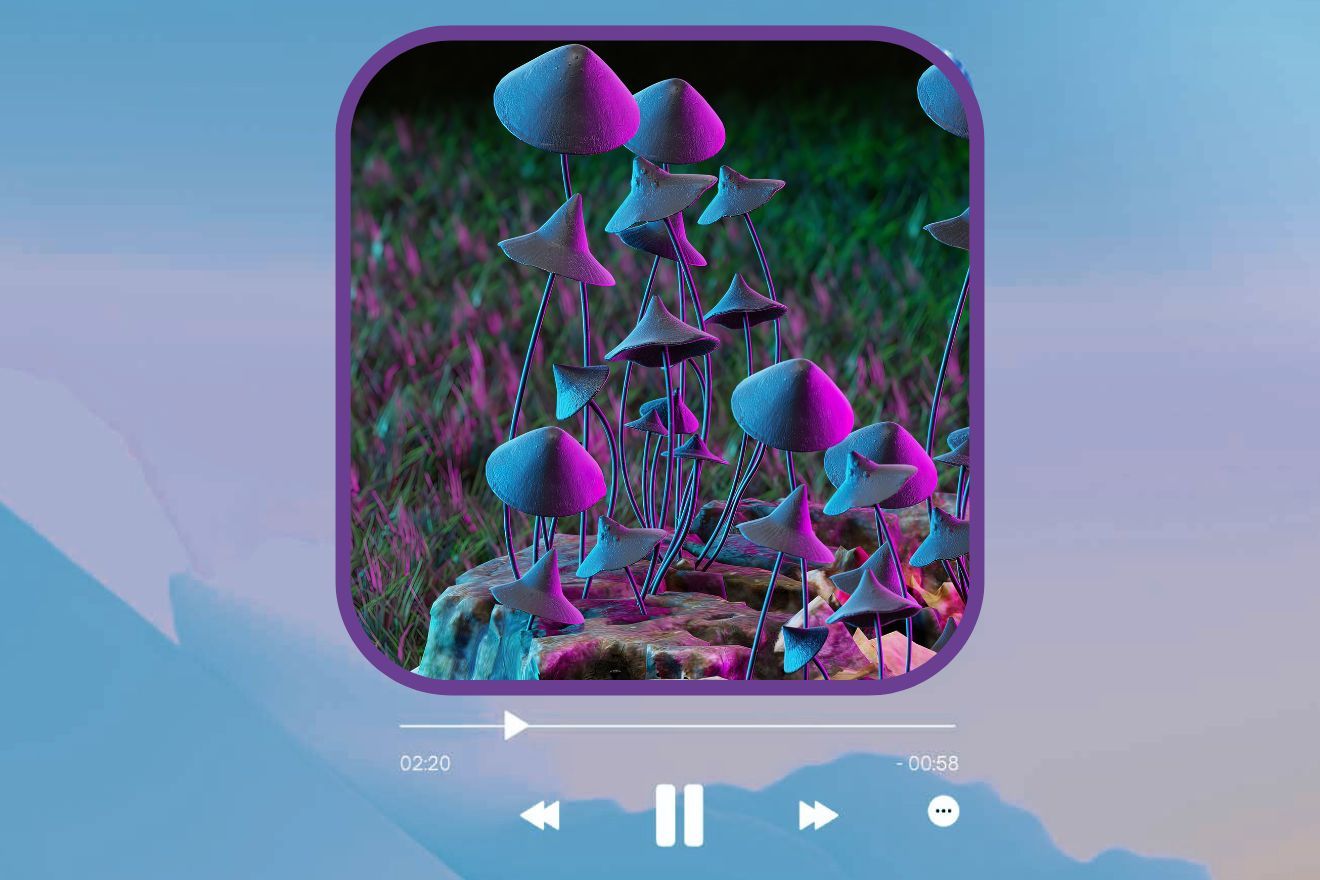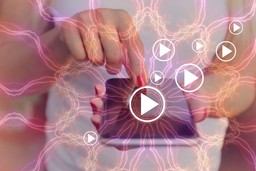Many consider music to be core to the psychedelic experience. Going back millennia, music features prominently in the indigenous use of psychedelics (such as the rattle and drum used in peyote ceremonies and the icaros, or traditional indigenous Amazonian songs, performed in ayahuasca ceremonies). In a Western context, by the late 1950s, music’s important contribution to psychedelic therapy was firmly established.
Stephen Lett and Erika Dyck write in a paper published in the journal Social History of Medicine that “religious sounds and music were both incorporated into and strategically avoided in the early psychedelic therapeutic sessions in an effort to achieve spiritual epiphanies at peak experiences” [1].
Since the 1950s, music has remained a staple of psychedelic-assisted therapy. It has been deemed so important that in a 1961 article, a team of researchers studying the effects of LSD on alcoholism and other psychiatric problems stated, “We think a group of four [therapists] is best. Generally, this includes the psychiatrist (as therapist), a psychologist (co-therapist), a psychiatric nurse and a music therapist” [2]. They recognized, in other words, the need for professional expertise with respect to the therapeutic use of music in psychedelic sessions.
But the question arises: What music should you listen to during a psychedelic session? Should you listen to one particular type of music in order to achieve spiritual or peak experiences? As Lett asks in an article for Chacruna: “Is it music’s emotional content or a patient’s familiarity with music that most reliably led to the desired outcome?” Of course, the answers to these questions are relevant for all kinds of psychedelic use, not just clinical, supervised sessions. Fortunately, researchers are beginning to shed some light on this topic.
The History of Music Selection for Psychedelic Therapy
In his article for Chacruna, Lett notes how Hermina H. Browne (1902–1966) was one of the first music therapists involved in psychedelic-assisted therapy. She developed a method for selecting music to accompany psychedelic sessions for alcoholics. Browne selected music based on emotional content, as well as the patient’s age, cultural background, and preferences.
In a later study, she chose music based on mood, quality, familiarity, general suitability, and the subject’s requests based on these criteria. Midway through the study, Browne devised a structured presentation of music, playing a particular ‘category’ of music for each period of listening (every other 30 minutes, as in the previous study).
This structured presentation of music:
- “relaxing to tense”
- “very tense, disturbed with a purpose”
- “solemn, meditative, self-searching, spiritual”
- “relaxing, spiritual”
- “reconciling, restoration of confidence, feeling of hope and faith”
These categories of music selected were meant to complement the pattern of reactions observed in previous LSD experiments; it was meant to match the ideal trajectory of a psychedelic session. Lett mentions, too, the work of psychiatrist Humphry Osmond (who introduced mescaline to Aldous Huxley), who argued that the most effective music in psychedelic therapy was that which the patient was most familiar with (which many psychonauts would agree with).
Psychedelic researchers Charles T. Eagle, Jr. and E. Thayer Gaston would come to criticize music therapists who selected music for patients because they deemed it ‘profound’, which they argued was merely a subjective opinion and prone to ideology and elitism. Instead, they insisted that the most therapeutically effective music was whatever the patient found familiar, in agreement with Osmond.
Helen L. Bonny (1921–2010) would become one of the most influential music therapists involved in psychedelic therapy. Her research was based on the notion that music’s emotional content, not its familiarity, was of primary importance (although she accepted that a person’s preferences and history with music were relevant variables, nonetheless).
Modern Research on Music in Psychedelic Therapy
In a 2018 paper published in Psychopharmacology, researchers at Imperial College London refer to music as ‘the hidden therapist’ based on its central role in psychedelic therapy [3]. Dr. Sam Gandy has said that “music can create a new form of structure and narrative in the midst of the psychedelic state, helping guide people through their inner ocean of mind.” Music can also help patients through uncertain, turbulent, or challenging experiences.
We can say, then, that in a directive context, music can facilitate immersive, meaningful, emotional, and awe-inspiring journeys, while in a non-directive context, it can play a calming and soothing role, encouraging feelings of safety and openness to the experience – to the information and insights that are arising.
In the 2018 paper, researchers note that music can support the occurrence of mystical and insightful experiences, which have been found to strongly predict beneficial outcomes of psychedelic therapy, such as reductions in depression, anxiety, and neuroticism and increases in openness.
Read more about the role of music in psychedelic-assisted therapy and listen to session playlists in an article written by MAPS researcher Dr. Ilsa Jerome.
What do researchers believe?
So what do researchers believe is the ideal music to listen to on psychedelics for therapeutic purposes? In the early days of psychedelic therapy, Western classical music was commonly selected, but a 2021 study published in the journal ACS Pharmacology and Translational Science calls into question whether this is the best music to use. It suggests that overtone-based music (emphasizing instruments with a strong overtone signature, such as Tibetan singing bowls, gongs, didgeridoo, chimes, bells, sitar, and human voice overtone singing) was associated with more mystical experiences than Western classical music, which until recently have dominated psychedelic therapy playlists [4].
A 2017 survey looked at individuals who had experience administering psilocybin (on a minimum of 50 occasions) in a therapeutic context. The aim of the study was to identify features of music that best supported the occurrence of mystical experiences. The researchers found that music with “regular, predictable, formulaic phrase structure, and orchestration, a feeling of continuous movement and forward motion that slowly builds over time, and lower perceptual brightness when compared to pre peak music” was ideal in this respect [5].
Wavepaths (Get 10% off with coupon code: PSPARTNER10), a company studying and developing music playlists for psychedelic therapy, states in an article:
“Music involving recognizable vocals is better excluded from psychedelic session music playlists, as exposure to language during a psychedelic experience may reduce chances of mystical experiences from occurring. In addition, language in the form of lyrics is likely to be directive in certain ways which may not always be advantageous for the fine tuned nature of psychedelic sessions.”
How about specific tracks?
In terms of specific tracks that researchers found highly effective, Wavepaths underscore that ‘Azure’ by Greg Haines (2012) stands out. It features in Mendel Kaelen’s playlist used in the 2016 psilocybin for depression study carried out by Imperial College London. It occurs around the ‘peak’ timeframe of the psychedelic session (02:34:41). Wavepaths note that the track “exhibits distinct examples of what Hinton & Kirmayer term ‘metabole’ – “a sudden shift in the music which brings about a change in perception from one state to another.”” These shifts fostered a sense of direction, encouraged the release and processing of emotion, and supported the experience of respite and calm. It had both propelling and anchoring effects. The track was especially personal, emotive, transformative, and therapeutic for participants.
‘Azure’ was also one of the only songs that patients specifically mentioned in post-session interviews, owing to its memorable effect. Here are some of those mentions:
“There’s one track [Greg Haines – Azure] that gets really really really intense.”
“[Greg Haines – Azure] I felt like I was sort of the highest I could get, it was like the absolute, the top of everything.”
“[Greg Haines – Azure] just builds and builds. You’re holding on to an extent, you just kind of go up and you’re like ‘ok, where am I? Can I go any further?’”
“[Greg Haines – Azure] really really beautiful, overwhelming, but really peaceful as well.”
Final Thoughts
This kind of research should in no way create a value judgment on an individual’s choice of music for their psychedelic session. Often, one’s favorite music—whatever the genre or mood—creates the most enjoyable, fulfilling, and memorable experience. (On the other hand, even if you normally love listening to death metal or black metal, this doesn’t mean the music will translate well in terms of psychedelic effects.) What modern research does point to, however, is the potential of certain kinds of music to facilitate specific aims—namely, peak experiences, which can have long-lasting positive outcomes.
Follow your Curiosity
Sign up to receive our free psychedelic courses, 45 page eBook, and special offers delivered to your inbox.References
- Lett, S., & Dyck, E. (2022). Tune in, Turn on: Religious Music and Spiritual Power in the History of Psychedelic Therapy. Social History of Medicine, hkac057.
- MacLean, J. R., MacDonald, D. C., Byrne, U. P. B., & Hubbard, A. M. (1961). The Use of LSD-25 in the Treatment of Alcoholism and Other Psychiatric Problems. Quarterly Journal of Studies on Alcohol, 22, 34-45.
- Kaelen, M., Giribaldi, B., Raine, J., Evans, L., Timmerman, C., Rodriguez, N., Roseman, L., Feilding, A., Nutt, D., & Carhart-Harris, R. (2018). The hidden therapist: evidence for a central role of music in psychedelic therapy. Psychopharmacology, 235(2), 505-519.
- Strickland, J. C., Garcia-Romeu, A., & Johnson, M. W. (2021). Set and Setting: A Randomized Study of Different Musical Genres in Supporting Psychedelic Therapy. ACS Pharmacology and Translational Science, 4(2), 472-478.
- Barrett, F. S., Robbins, H., Smoke, D., Brown, J. L., & Griffiths, R. R. (2017). Qualitative and Quantitative Features of Music Reported to Support Peak Mystical Experiences during Psychedelic Therapy Sessions. Frontiers in Psychology, 8, Article: 1238.
- Kaelen, M. (2017). The psychological and human brain effects of music in combination with psychedelic drugs. Doctoral thesis, Imperial College London.







